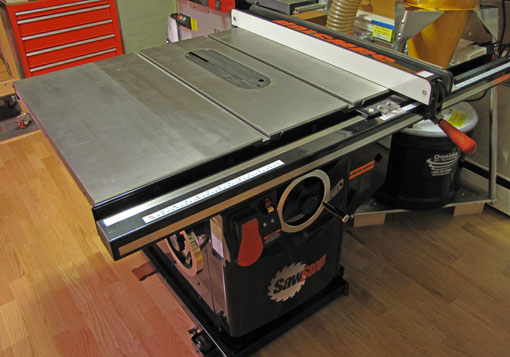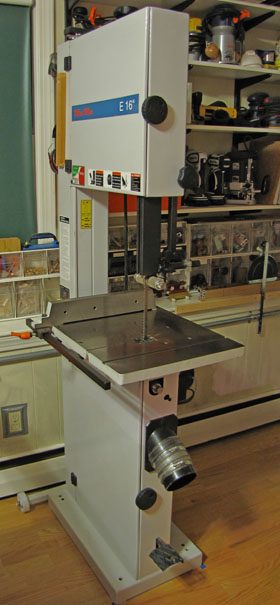
I have had many conversations over the years with woodworkers who were building or upgrading their shops and facing the question of where to place the higher priority, on the table saw or the bandsaw. Sure, with enough money and shop space, as well as time to set up, learn, and fuss with these tools, the most versatility is gained by having both machines. However, since we all deal with practical limitations, and shops are usually built incrementally, it is worthwhile to compare their merits. You might be able to buy only one of these two machines, or there might be a long wait before buying the second. If you are buying both, you might be wondering which one warrants a bigger share of your money.
 More fundamentally, we tend to think through the building process, and even the design options, with our tools in mind. We steer our work toward the tools with which we are most comfortable – our “go-to” tools and skills. So this discussion is more significantly about which of these two machines do you mentally reach for first.
More fundamentally, we tend to think through the building process, and even the design options, with our tools in mind. We steer our work toward the tools with which we are most comfortable – our “go-to” tools and skills. So this discussion is more significantly about which of these two machines do you mentally reach for first.
Let the sawdust fly.
The table saw excels at accurate ripping parallel to an existing straight edge. It can also very accurately crosscut at a chosen angle, usually 90º, to a straightedge. Some joinery can be accomplished, such at making tenons, slip joints, and dovetail work. Grooves and dadoes can be cut with the addition of a dado set.
The bandsaw can also rip and crosscut, but the sawn surface is generally not as exquisitely accurate nor as clean as that produced by the table saw. Truing and smoothing, sometimes tedious, are required. Using the bandsaw may seem like more work and even feel crude compared to the table saw.
I suspect this imagery is what causes some woodworkers to view the bandsaw as the second-banana sawing machine in the shop. They may figure that it is nice to have for cutting curves, but since they mostly make Arts and Crafts and Shaker style furniture, it gets dropped down on the priority list.
As you might guess, I strongly disagree with this “table saw-centric” view. Further, to those woodworkers who are making a priority decision as discussed above, I contend that placing the bandsaw first will, in most cases, make you a better craftsman.
Too often with issues like this, there is the tendency to think of the tool’s functions in isolation. It is more useful to think through the design and building processes, and how the tool can change what you can accomplish. So instead of listing what each machine can do, salesman-style, let’s look at real project scenarios using these machines.
For the record, I own and happily use a Saw Stop 10″ cabinet saw and a Minimax 16″ bandsaw. This is not a question of one machine to the exclusion of the other but a matter of prioritizing which machine tends to guide your woodworking.
Next: Round 2, the real action starts. We’ll consider these projects: a wall cabinet with frame and panel doors, and a table with straight-tapered or curved legs.


The perception you described at the start is pretty much where I’ve been, so I’m looking to see where you go on this topic. I would also add that the table saw’s alignment/setup is more easily understood. The bandsaw seems more flexible/complex, and it is harder to interpret the result — whether that is the nature of a bandsaw, the setup of the machine, or technique, etc.
Matt
Thanks for the comment, Matt.
The bandsaw does require more ongoing tuning such as when changing blades, but I think the initial setup of a table saw is more work than for a bandsaw.
As for interpreting the result of bandsaw work, yes, it does not produce the neatness of table saw cuts. By adjusting your approach to building, you can become comfortable with the nature of the band saw.
Still, it is nice to have both tools.
Rob